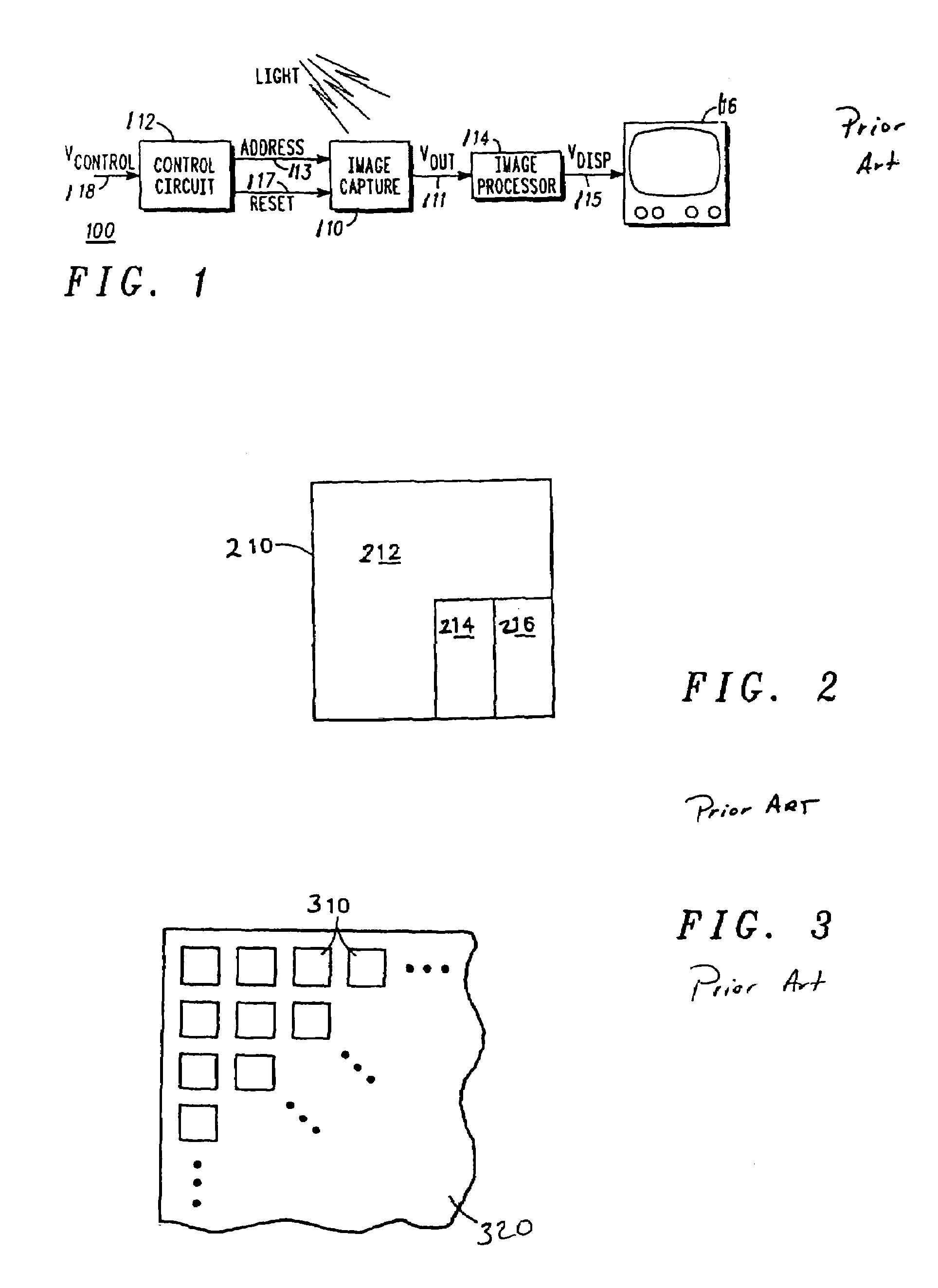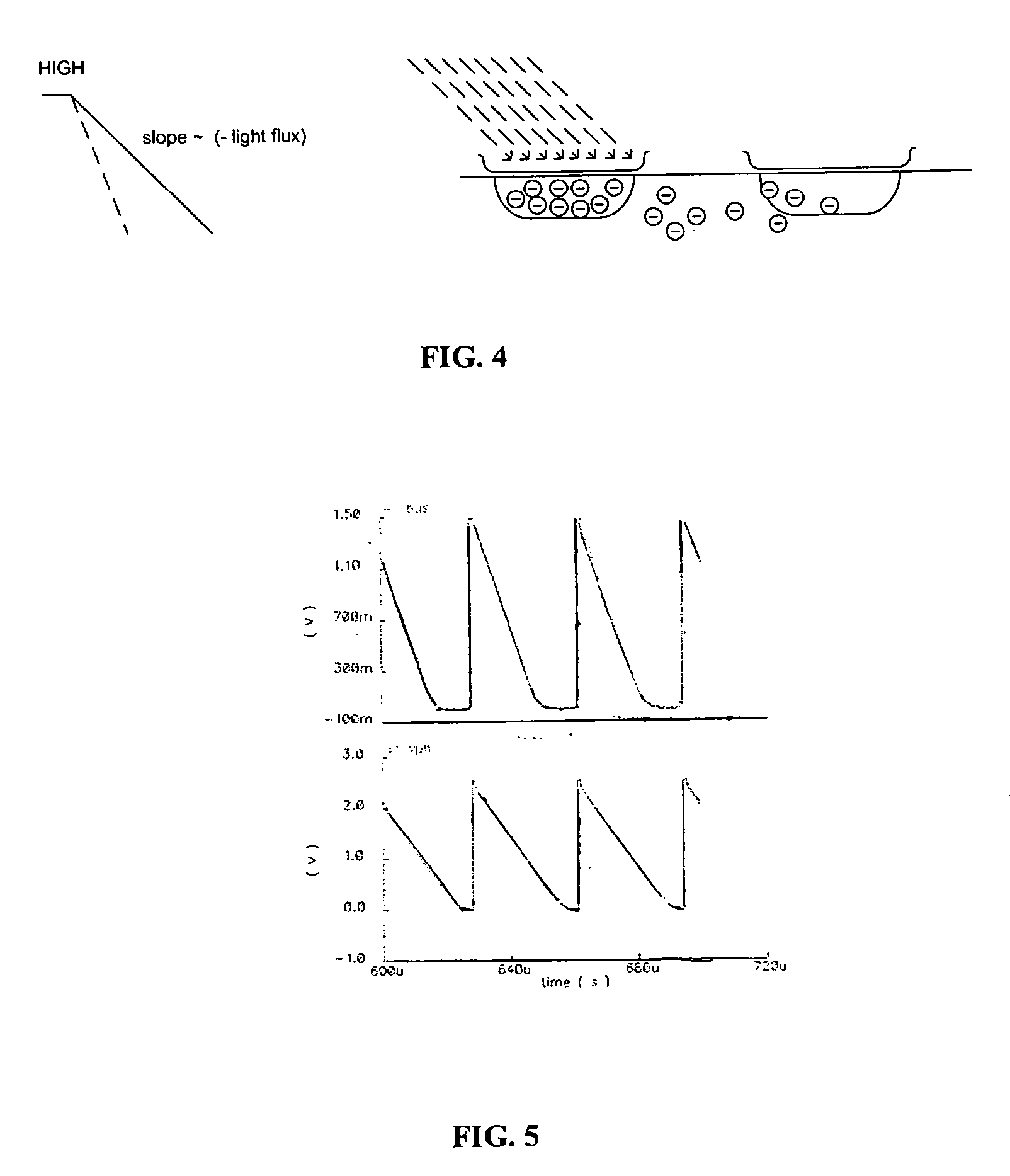Self-calibrating anti-blooming circuit for CMOS image sensor having a spillover protection performance in response to a spillover condition
a self-calibrating, image sensor technology, applied in the field of self-calibrating anti-blooming circuit for cmos image sensor, can solve the problems of limited dynamic range and blooming, cmos image sensor suffers, and the effective dynamic range of the imager is reduced, and the resulting image is shortened. , the effect of reducing the effective dynamic rang
- Summary
- Abstract
- Description
- Claims
- Application Information
AI Technical Summary
Benefits of technology
Problems solved by technology
Method used
Image
Examples
Embodiment Construction
[0034]Embodiments of the invention provide a method and an apparatus for providing blooming protection for a imager cell, or a pixel, in an image array while extending the dynamic range. The terms imager cell, pixel cell and pixel may be used interchangeably in this description. Also, the terms imager array and pixel array may be used interchangeably in this description. Each pixel in an image array may include at least one transistor for resetting the pixel, typically an n-channel, metal-oxide-semiconductor field-effect transistor (MOSFET). The reset transistor receives a voltage at its gate terminal. The gate voltage, in turn, controls whether the reset transistor will operate to reset the pixel well or as an anti-blooming drain.
[0035]Embodiments of the invention provide a method and an apparatus to determine the voltage VG applied to the reset transistor to prevent blooming without sacrificing dynamic range, by taking into account the manufacturing process parameters and temperat...
PUM
 Login to View More
Login to View More Abstract
Description
Claims
Application Information
 Login to View More
Login to View More - R&D
- Intellectual Property
- Life Sciences
- Materials
- Tech Scout
- Unparalleled Data Quality
- Higher Quality Content
- 60% Fewer Hallucinations
Browse by: Latest US Patents, China's latest patents, Technical Efficacy Thesaurus, Application Domain, Technology Topic, Popular Technical Reports.
© 2025 PatSnap. All rights reserved.Legal|Privacy policy|Modern Slavery Act Transparency Statement|Sitemap|About US| Contact US: help@patsnap.com



